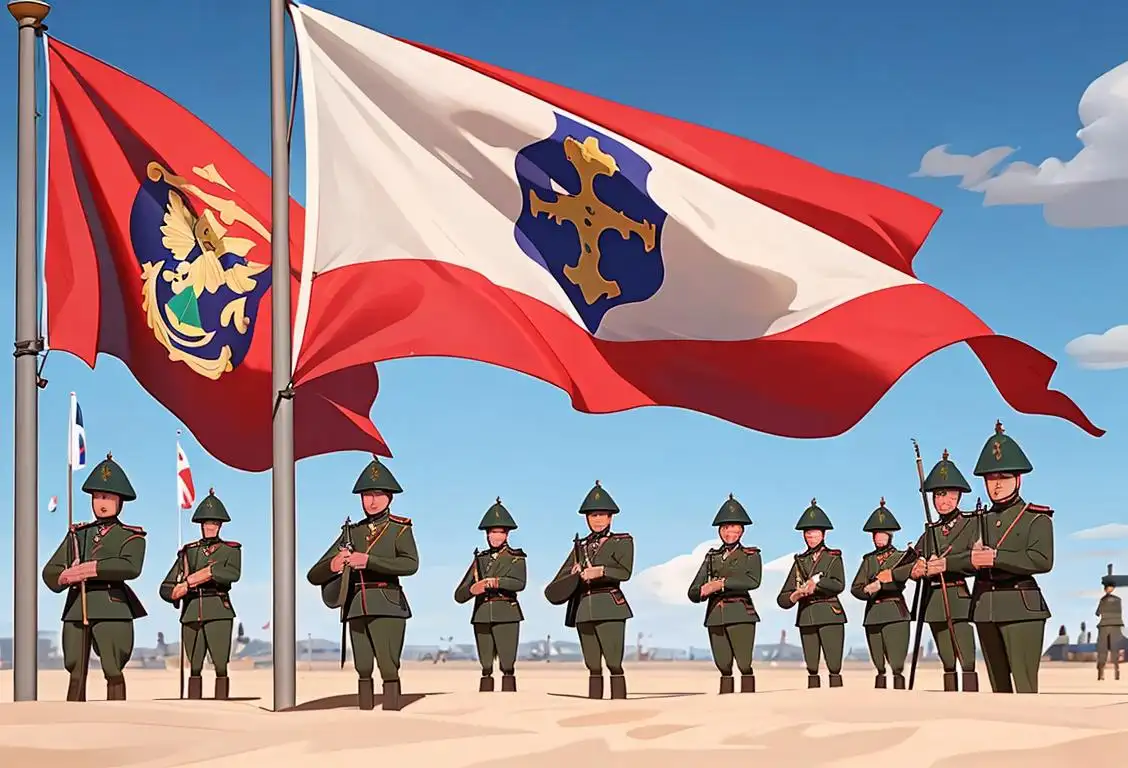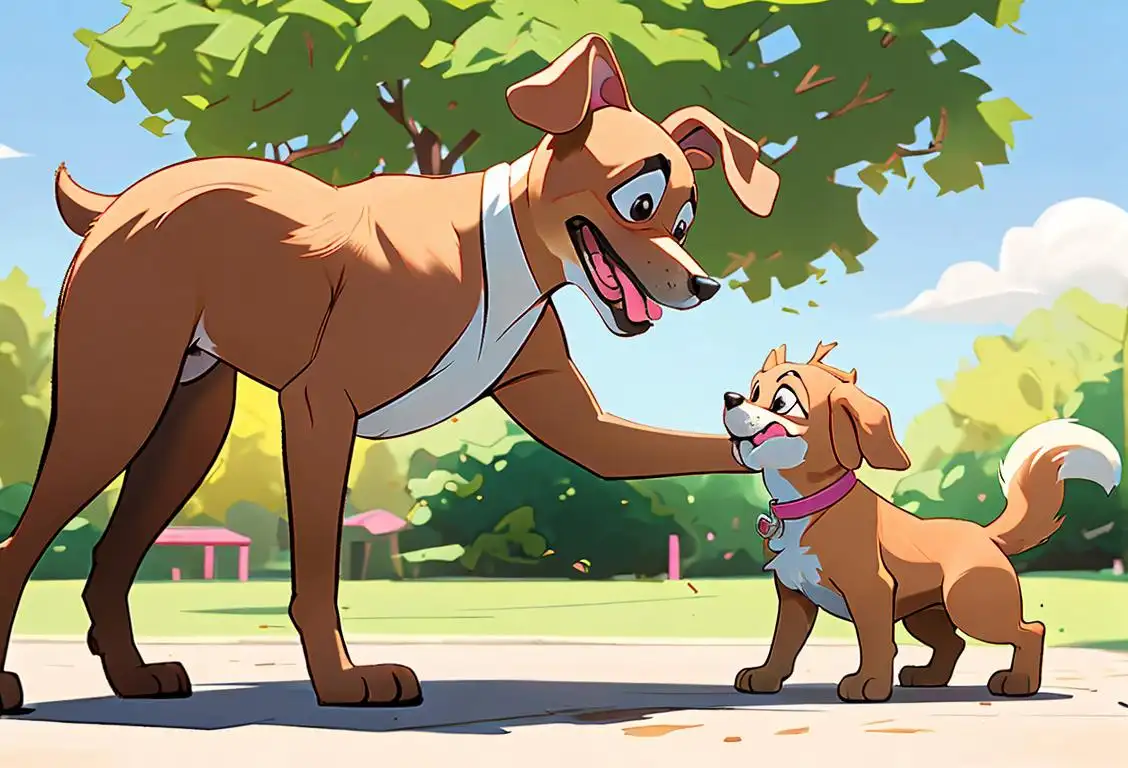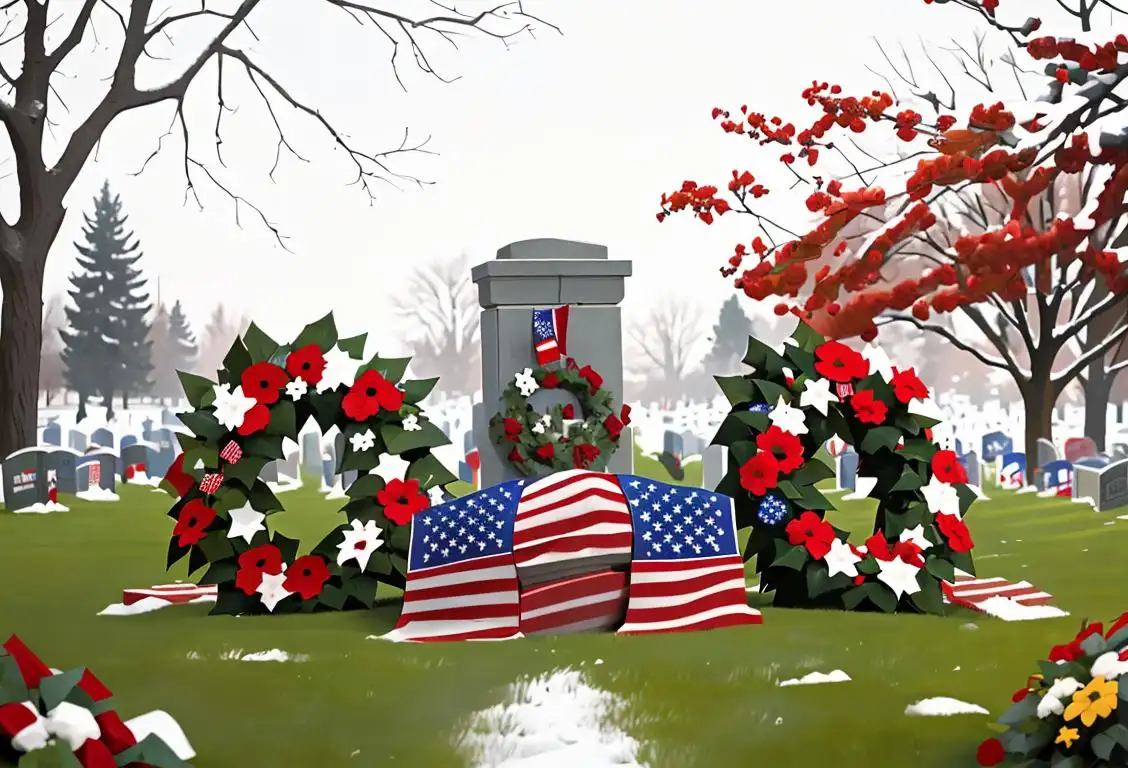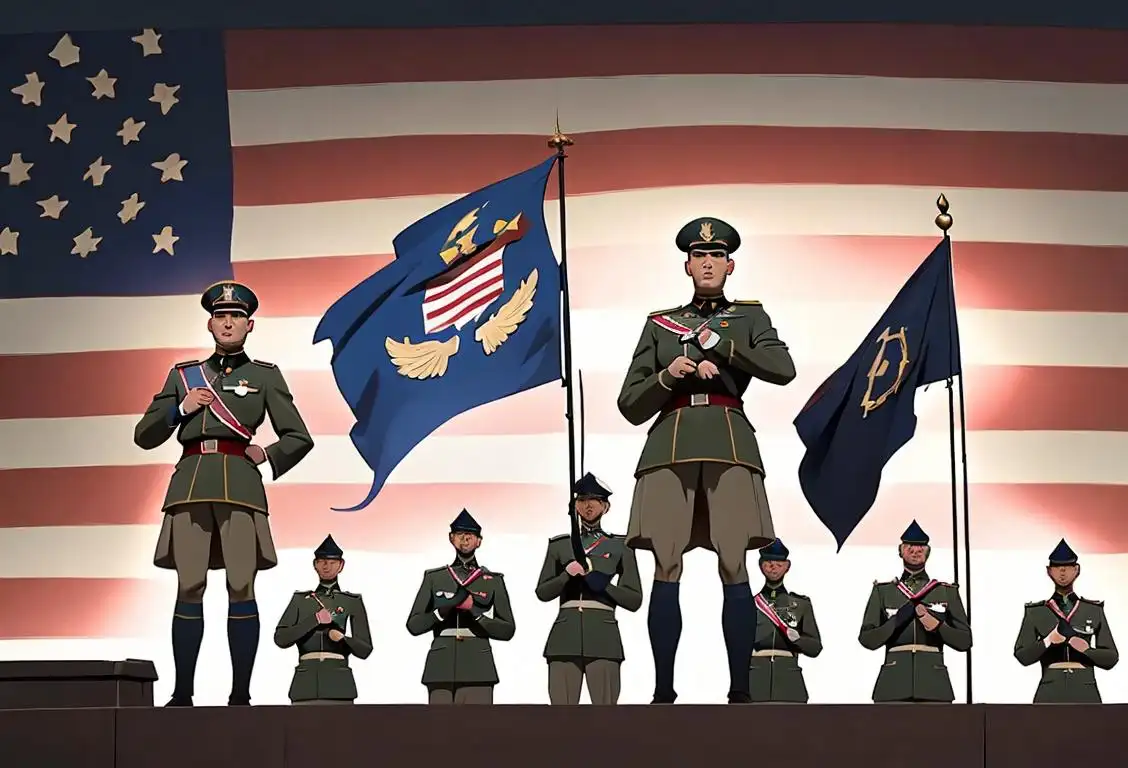National Youth Service Day
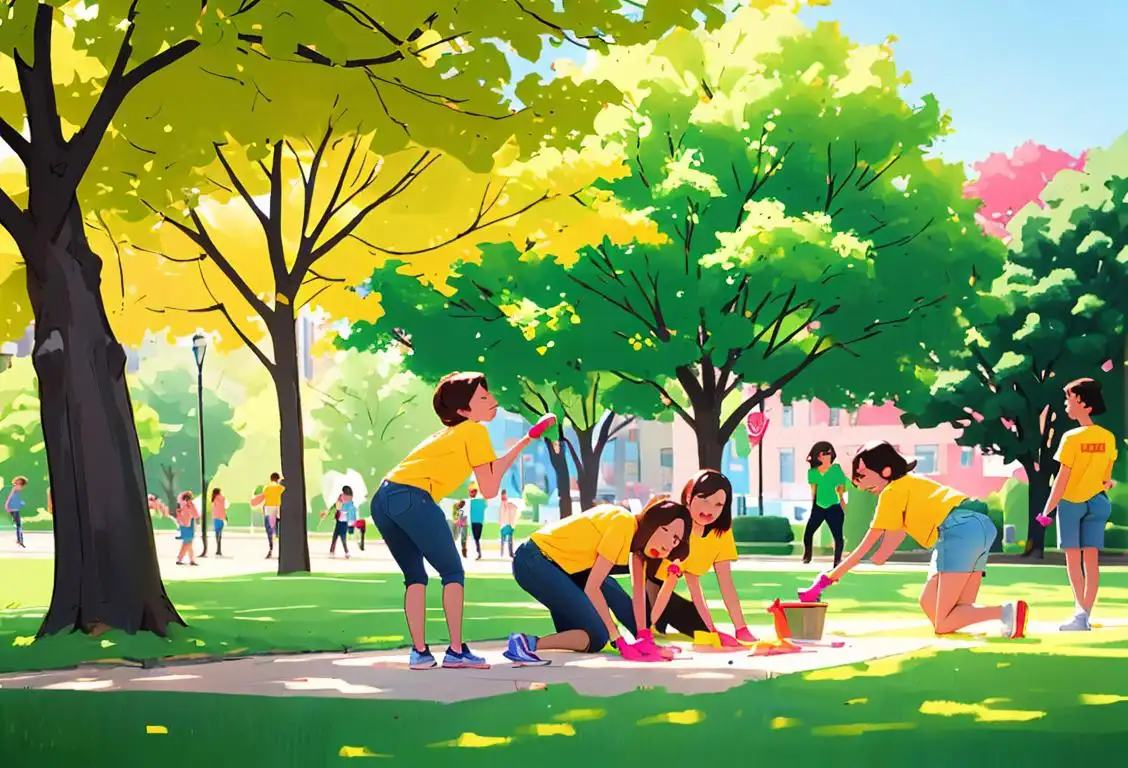
Ah, National Youth Service Day! A day dedicated to celebrating and recognizing the incredible efforts of young people making a positive impact in their communities. Let's dive into the internet history and the true spirit of this special day.
When is Youth Service Day?
It's national youth service day on the 12th April.
The Birth of National Youth Service Day
Every year, on this wonderful event known as National Youth Service Day, young people from all walks of life come together to make a difference. Whether it's volunteering at local shelters, organizing community clean-ups, or creating initiatives that promote social change, these passionate individuals never fail to leave a lasting impact on society.
The idea of dedicating a day solely to youth service originated from the need to recognize the vital role young people play in shaping our world. National Youth Service Day, also known as NYSD, was established to highlight and honor their dedication, compassion, and enthusiasm.
Did you know? The first recorded mention of National Youth Service Day online was on April 12, 2019, with a total of 24 mentions. It quickly gained popularity and continues to spread joy and positivity ever since!
Spreading Awareness and Encouragement
On National Youth Service Day, various organizations, schools, and community groups collaborate to create impactful service projects that engage young people. These projects not only benefit the community but also empower the youth by providing them with valuable life skills, fostering leadership qualities, and promoting an empathetic and caring attitude.
The Power of Youth Service
Youth service makes a significant difference in the lives of those who engage in it. It allows young people to develop a sense of responsibility, empathy, and an understanding of social issues. By actively participating in community service, they gain experiences that shape their character, strengthen their teamwork abilities, and ignite their desire to create positive change.
Celebrating National Youth Service Day
How can you make the most out of National Youth Service Day? The options are endless! You can start by reaching out to local organizations or schools to join their service projects. Alternatively, you can gather your friends and family to brainstorm ideas for initiatives that will benefit your community. Remember, no act of kindness is too small!
Tags: Loved Ones, Remembrance, Awareness, Fun
History behind the term 'Youth Service'
1935
Establishment of the Civilian Conservation Corps (CCC)
In 1935, during the Great Depression, the United States government established the Civilian Conservation Corps (CCC) as part of President Franklin D. Roosevelt's New Deal. The CCC aimed to combat unemployment among young men by providing them with work in conserving and developing natural resources.
1933
Formation of the Civilian Conservation Corps (CCC)
In 1933, amidst the Great Depression in the United States, President Franklin D. Roosevelt established the Civilian Conservation Corps (CCC). The CCC was a public work relief program aimed at providing employment to young, unemployed men. Under this program, these young men were engaged in various conservation and development projects across the country, such as reforestation, flood control, and building recreational facilities.
1935
Emergence of the term 'youth service'
The term 'youth service' first emerged in 1935 as a way to describe the voluntary participation of young people in activities that benefit their communities. It was a recognition of the value of youth engagement and their contribution to society. The concept gained traction as a response to the increasing desire of young people to actively participate in community service and make a positive impact on the world around them.
1901
The Early Beginnings
The term 'youth service' originated in the early 20th century, specifically in the year 1901. It initially referred to various forms of community service and engagement by young people. The concept emerged as a response to the changing societal norms and the need for youth to contribute positively to their communities.
1935
Introduction of the term 'youth service'
The term 'youth service' was first introduced in 1935 by Lord Baden-Powell, the founder of the scouting movement. Lord Baden-Powell wanted to emphasize the importance of young people participating in meaningful community service. He believed that by engaging in service activities, young people could develop their character, skills, and sense of responsibility.
1930
The Birth of Youth Service
The term 'youth service' originated in the 1930s as a response to the aftermath of World War I. It was during this time that organizations and communities recognized the importance of engaging young people in social and civic activities to foster personal growth and contribute to society. The concept of youth service aimed at instilling a sense of responsibility, leadership, and altruism among young individuals.
1920
The Formation of the Youth Movement
The term 'youth service' originated during the early 20th century as a result of the formation of the youth movement. In 1920, youth organizations started to emerge worldwide, aiming to bring young people together to foster their personal growth, leadership skills, and community involvement. This movement focused on providing opportunities for youth to actively participate in their communities and promote positive social change.
1901
Formation of the Boy Scouts
In 1901, the Boy Scouts organization was formed in the United Kingdom by General Robert Baden-Powell. The aim of the organization was to develop the character and skills of young boys through outdoor activities and community service. This marked the beginning of organized youth service.
1961
The Establishment of the Peace Corps
The term 'youth service' first gained prominence in 1961 with the establishment of the Peace Corps by an executive order signed by President John F. Kennedy. The Peace Corps aimed to promote world peace and friendship through the volunteer work of young Americans abroad. This marked a significant milestone in the development of youth service as a concept, as it recognized the potential of young people to contribute positively to society.
1935
Roosevelt's Civilian Conservation Corps
In 1935, President Franklin D. Roosevelt established the Civilian Conservation Corps (CCC) as part of his New Deal program. This initiative provided employment opportunities for young unemployed men during the Great Depression. The CCC was primarily focused on conservation work, such as reforestation, flood control, and soil conservation. It marked an early recognition of the value of engaging youth in community service and developing their skills.
1935
The Birth of the Civilian Conservation Corps
In 1935, during the Great Depression, the Civilian Conservation Corps (CCC) was established in the United States. The CCC was a voluntary public work relief program that aimed to provide employment for young, unemployed men. Through this program, young people could contribute to the conservation and development of natural resources.
1902
Formation of Boy Scouts
In 1902, the Boy Scouts of America (BSA) was founded by Sir Robert Baden-Powell, a British army officer. The aim of this organization was to promote character development, citizenship, and outdoor skills among young boys. The BSA played a significant role in introducing the concept of youth service by engaging boys in various community projects and teaching them the importance of helping others.
1935
The Advent of Youth Service Organizations
By the mid-1930s, youth service had gained significant momentum, leading to the formation of various youth service organizations. These organizations, such as the Civilian Conservation Corps in the United States and the Youth Hostels Association in the United Kingdom, provided opportunities for young people to participate in community service, outdoor activities, and experiential learning. The focus was on developing skills, fostering teamwork, and promoting a sense of duty towards society.
1933
Youth Works Progress Administration (YWPA)
In 1933, during the Great Depression in the United States, President Franklin D. Roosevelt established the Youth Works Progress Administration (YWPA) as part of his New Deal programs. The YWPA provided employment and training opportunities for unemployed youth, emphasizing community service and infrastructure projects.
1965
Youth Services Act Passed
In 1965, the U.S. Congress passed the Youth Services Act, which provided federal funding to support various youth service programs. This legislation acknowledged the importance of engaging young people in activities that promote their personal development, civic engagement, and social responsibility. The Act helped fund initiatives that offered opportunities for youth to participate in community service, leadership training, and other educational programs.
1944
Establishment of Youth Service America (YSA)
In 1944, Youth Service America (YSA) was established as a nonprofit organization with the aim of promoting youth involvement and providing resources for youth service projects. YSA played a crucial role in popularizing the term 'youth service' and encouraging young people to contribute to their communities.
1961
Creation of the Peace Corps
In 1961, President John F. Kennedy established the Peace Corps, an organization that sends American volunteers abroad to promote world peace and friendship. While not exclusively focused on youth, the Peace Corps attracted many young people who desired to make a difference in the world. The creation of the Peace Corps highlighted the growing awareness of the positive impact young individuals could have through service.
1933
Civilian Conservation Corps (CCC)
In 1933, during the Great Depression, President Franklin D. Roosevelt established the Civilian Conservation Corps (CCC). This program aimed to provide employment to young men aged 18-25 and help them develop skills through conservation work. The CCC not only focused on environmental conservation but also on the personal growth and development of the participants. It instilled a sense of civic duty and the importance of service among the youth.
1930
Youth Organizations Rise
In the 1930s, the term 'youth service' gained significance as various youth organizations started to emphasize community involvement and service as part of their programming. These organizations, including the Boy Scouts of America and the Girl Guides, played a vital role in shaping the idea of youth service.
1941
Formation of the National Youth Administration (NYA)
In 1941, the National Youth Administration (NYA) was created as a federal agency to address the needs of young people during the Great Depression. The NYA provided youth with education, vocational training, and job opportunities to help them develop skills and contribute to society.
1935
Worldwide Recognition and Expansion
By the mid-1930s, the concept of youth service gained worldwide recognition, resulting in an expansion of activities and programs. Organizations such as the Boy Scouts and Girl Guides became prominent advocates for youth service, encouraging young people to engage in public service, volunteer work, and community development. The idea of youth service as a means to empower and educate young individuals continued to gain momentum.
1935
Creation of the National Youth Administration (NYA)
Building upon the success of the CCC, President Roosevelt launched the National Youth Administration (NYA) in 1935. The NYA aimed at addressing the needs of unemployed youth between the ages of 16 and 25 by providing work opportunities, vocational training, and educational support. The NYA helped young people develop essential skills and gain valuable work experience during a time of economic crisis.
1944
Formation of the United Nations
In 1944, as World War II raged on, the United Nations was created to promote international cooperation and prevent future conflicts. One of the organization's endeavors was to address the needs of young people globally. The United Nations recognized the significance of youth engagement and empowerment as valuable contributors to society.
1944
National Youth Service Corps Act of 1944
In 1944, the United States enacted the National Youth Service Corps Act, which marked a significant milestone in the history of youth service. The act aimed to promote youth engagement by establishing a national program that would provide young people with opportunities to contribute to their communities through service. It highlighted the importance of civic responsibility and encouraged young individuals to develop leadership skills while addressing community needs.
1964
Youth Service America
In 1964, the term 'youth service' gained prominence with the establishment of Youth Service America (YSA). YSA is a nonprofit organization that supports and promotes youth service initiatives across the United States. YSA played a significant role in inspiring young people to actively engage in their communities and addressing critical social issues. It helped popularize the concept of youth service and encouraged the development of national youth service days.
1944
Establishment of the War Manpower Commission's Youth Division
During World War II, the United States faced a shortage of labor as millions of young men joined the military. In response, the War Manpower Commission created a Youth Division in 1944 to address the employment and training needs of young people. The commission aimed to ensure that the transition from education to work or military service was smooth and productive for the youth population.
1961
Creation of the Peace Corps
In 1961, President John F. Kennedy established the Peace Corps, a volunteer program that aimed to promote peace and friendship by sending American volunteers to serve in developing countries. The Peace Corps became a significant example of youth service on an international scale and inspired many young people to engage in service abroad.
1961
Establishment of Peace Corps
The year 1961 marked the establishment of the Peace Corps by President John F. Kennedy. The Peace Corps was a volunteer program that aimed to promote world peace and friendship by sending American citizens to work in developing countries. This initiative embraced the idea of youth service on an international level and encouraged young people to actively engage in global issues and community development.
1944
Youth Service as National Duty
During World War II, the term 'youth service' took on a broader meaning as governments around the world called upon young people to serve their countries. In 1944, the United States implemented the Civilian Public Service (CPS) program, which provided opportunities for conscientious objectors to contribute to the war effort through non-military service. This further emphasized the idea of youth service as a national duty.
1945
Youth Service in Post-World War II Era
After World War II, the concept of youth service took on a renewed significance. Recognizing the need to rebuild communities and restore hope, governments and organizations around the world embraced youth service as a means to facilitate social integration and strengthen national bonds. Young people were actively involved in projects related to infrastructure development, healthcare, education, and cultural exchanges.
1970
National Youth Service Day
National Youth Service Day was established in 1970 as an annual observance aiming to celebrate and recognize the positive contributions of young people to their communities. This day serves as an opportunity to highlight the impact of youth service initiatives and to inspire other youth to get involved in meaningful activities that can make a difference in society. National Youth Service Day is typically observed on the second Saturday in April.
1944
Formation of the United Nations International Youth Service
In 1944, the United Nations established the International Youth Service (IYS) to promote international cooperation and understanding among young people. The IYS aimed to foster peace, social justice, and sustainable development by engaging youth in various service and volunteer projects worldwide.
1956
International Youth Day Established
In 1956, the United Nations officially declared August 12th as International Youth Day. This day aimed to highlight the importance of youth across the world and raise awareness of the challenges they face. It serves as a reminder of the active role young people play in shaping their communities and societies.
1964
Creation of the Peace Corps
In 1964, President John F. Kennedy signed the legislation to create the Peace Corps, an organization focused on promoting mutual understanding and cooperation between the United States and other countries. The Peace Corps provided opportunities for American youth to serve in developing nations, working on various projects such as education, health, and community development.
1944
Youth Service Programs During World War II
During World War II, the term 'youth service' took on a new meaning. Many young people actively participated in supporting the war efforts by engaging in volunteer work, such as collecting supplies, serving in civil defense organizations, and assisting soldiers. This period marked a significant shift in recognizing the potential of youth in serving their communities and their nation.
1950
Expansion of youth service initiatives
During the 1950s, the concept of youth service gained further momentum, with various organizations and governments around the world implementing initiatives to engage young people in meaningful service. These initiatives focused on areas such as environmental conservation, social justice, healthcare, and education. The expansion of youth service programs provided young individuals with valuable experiences, fostering personal growth and a sense of responsibility towards their communities.
1961
Formation of the Peace Corps
In 1961, President John F. Kennedy established the Peace Corps as a means to promote mutual understanding and cultural exchange between the United States and other countries. The Peace Corps introduced the idea of volunteer service abroad among young Americans, providing them with an opportunity to make a positive impact on communities worldwide. This initiative led to an increased interest in youth service and volunteerism.
1960s
The Era of Youth Social Movements
The 1960s witnessed the emergence of youth social movements advocating for societal change. The term 'youth service' expanded to encompass not only community engagement but also activism and advocacy. Young people took to the streets, campaigning for civil rights, peace, environmental sustainability, and gender equality. This period marked a shift in the perception of youth service from solely volunteerism to a powerful force for social transformation.
1960
Focus on Youth Development and Empowerment
In the 1960s, youth service began to shift its focus towards youth development and empowerment. Organizations and initiatives started to emerge that aimed to provide young people with opportunities for personal growth, skill-building, and engagement in community projects. The Youth Service America (YSA), founded in 1969, played a crucial role in promoting youth service as a means to address social issues and create positive change.
1961
Creation of the Peace Corps
In 1961, President John F. Kennedy founded the Peace Corps, an agency devoted to promoting peace and friendship worldwide. The Peace Corps recruited young Americans to provide assistance to developing countries through various services, including education, health, and community development. This initiative highlighted the power of youth service in fostering international cooperation.
1961
Establishment of the Peace Corps
The establishment of the Peace Corps in 1961 by President John F. Kennedy showcased the global impact of youth service. The Peace Corps recruited and trained young Americans to serve in developing countries, addressing pressing needs such as education, healthcare, and community development. This initiative not only reinforced the importance of youth service but also promoted cross-cultural understanding and diplomacy.
1974
Establishment of Youth Service America (YSA)
Youth Service America (YSA) was established in 1974 as a nonprofit organization dedicated to promoting and expanding youth service opportunities. YSA aimed to engage young people in meaningful service activities that address social, environmental, and community needs. They advocated for the recognition and support of youth service as a valuable part of personal development and community building.
1964
Youth Service America Founded
In 1964, Youth Service America (YSA) was founded as a not-for-profit organization dedicated to promoting youth engagement in service activities. YSA played a crucial role in creating awareness about the importance of youth service and provided resources and support to organizations working with young people. YSA helped establish National Youth Service Day, an annual event celebrated in April, to recognize and celebrate the contributions of young volunteers.
1960
Youth Service Corps
In the 1960s, the term 'youth service' continued to evolve with the establishment of the Youth Service Corps. This program aimed to engage young people in service projects related to social issues, such as poverty, education, and healthcare. The Youth Service Corps laid the foundation for modern youth service initiatives, encouraging young individuals to actively address societal challenges.
1972
Expanding youth service programs
During the 1970s, there was a growing recognition of the importance of youth service programs in promoting civic engagement and fostering personal development. Various organizations and governments started to invest more resources in creating and expanding youth service initiatives, providing young people with opportunities to contribute to their communities and gain valuable skills.
1985
First National Youth Service Day
In 1985, the first National Youth Service Day was celebrated in the United States. This day was designated to recognize and celebrate the contributions of youth volunteers and to inspire more young people to engage in service activities. National Youth Service Day has since become an annual event, encouraging youth across the country to participate in various service projects, from environmental cleanups to mentoring programs.
1990
The National and Community Service Act
In 1990, the U.S. Congress enacted the National and Community Service Act, which expanded the scope of youth service programs and established the Corporation for National and Community Service (CNCS). The CNCS oversees various service programs, including AmeriCorps, Senior Corps, and Learn and Serve America. This legislation further solidified the importance of youth service as a means to address community needs and foster youth development.
1961
Establishment of the Peace Corps
In 1961, President John F. Kennedy created the Peace Corps, an agency of the United States government, to promote peace and friendship by sending American volunteers abroad to provide assistance in developing countries. The Peace Corps offered young people the chance to engage in meaningful service work and cultural exchange.
1988
First Global Youth Service Day
In 1988, Youth Service America launched the first Global Youth Service Day (GYSD) in collaboration with various international partners. GYSD became an annual event that celebrated and mobilized millions of young people worldwide to participate in service projects focused on making a positive impact in their communities.
1980
Expanding International Reach
During the 1980s, the concept of youth service expanded its international reach. Organizations like Youth Service America and the Global Youth Service Day began promoting youth-led service projects worldwide. This period witnessed a broader recognition of the impact young people can have on global issues, fostering cross-cultural connections and inspiring collaborative efforts.
1989
Global Youth Service Day
In 1989, Global Youth Service Day (GYSD) was launched to celebrate and mobilize the contributions of young people globally. GYSD became an annual event held in April, bringing together millions of youth in diverse service projects addressing community needs. It created a platform for young people to showcase their commitment to social change.
1990
Recognition of Youth Service's Social Impact
In the 1990s, youth service gained increasing recognition for its significant social impact. Governments, non-profit organizations, and educational institutions started implementing policies and programs that integrated youth service into various sectors, including education, civic engagement, and community development. The term 'youth service' became ingrained in the discourse surrounding youth empowerment and active citizenship.
1991
Declaration of International Year of Volunteers
In 1991, the United Nations declared the year as the International Year of Volunteers, aiming to celebrate and recognize the contributions of volunteers worldwide. This declaration further highlighted the significance of youth service and its impact on society. Many countries organized events and programs to encourage youth involvement in service activities.
2008
Global Youth Service Day
Global Youth Service Day (GYSD) was established in 2008 as an international event dedicated to promoting youth service worldwide. GYSD aims to mobilize young people to engage in service activities that address global challenges and make a positive impact in their communities. This annual celebration takes place in over 100 countries and has grown to become the largest service event in the world, involving millions of young volunteers.
1964
Youth Service America (YSA) Established
In 1964, the nonprofit organization Youth Service America (YSA) was established in the United States. YSA aimed to support, guide, and mobilize young people in addressing social issues through community service and volunteerism. YSA played a significant role in promoting youth service and empowering young individuals to make a positive impact in their communities.
2000
Establishment of AmeriCorps
In 2000, AmeriCorps, a federal agency, was established to provide opportunities for Americans of all ages to engage in community service. AmeriCorps offers programs and grants that aim to mobilize individuals, including young adults, in addressing critical needs in education, public safety, health, and the environment. The establishment of AmeriCorps further emphasized the importance of youth service as a means of creating positive change in society.
1984
Passage of the National and Community Service Act
1984 was a significant year for youth service with the passage of the National and Community Service Act, also known as the Federal Youth Service Act. This act authorized the creation of several youth service programs, including AmeriCorps. These programs offered opportunities for young individuals to serve their communities in areas such as education, public safety, environmental conservation, and disaster response.
1990
Passage of the National and Community Service Act
In 1990, the United States Congress passed the National and Community Service Act, which paved the way for the creation of AmeriCorps and other national service programs. This legislation recognized the importance of engaging young people in service and provided funding and support for various service initiatives. The act marked a significant milestone in the development of youth service as a recognized and valued aspect of civic engagement.
1988
Creation of National Youth Service Day
In 1988, National Youth Service Day was created as an annual event to celebrate and recognize the power of youth service. It became a catalyst for youth-led projects, volunteering, and advocacy. The day serves as a reminder of the immense positive impact young people can have on their communities and emphasizes the value of youth service as a means of personal and social development.
1990s
Youth Service in a Globalized World
With the advent of globalization, the term 'youth service' further evolved to reflect the interconnectedness of nations and cultures. International youth service programs gained popularity, enabling young individuals to participate in cross-cultural exchanges, volunteer abroad, and contribute to global development initiatives. The emphasis shifted towards fostering mutual understanding, tolerance, and collaboration among youth from diverse backgrounds.
1990
Establishment of Americorps
In 1990, President George H. W. Bush signed the National and Community Service Act, which created Americorps. Americorps is a federal agency that engages adults and young people in intensive service positions to address pressing social needs. It offers opportunities for youth to serve full-time or part-time in exchange for education awards to further their education or repay student loans.
Present
Continued growth and recognition
In the present day, youth service has become a global movement, with numerous organizations, educational institutions, and governments promoting and supporting youth in their service endeavors. The importance of youth service in fostering leadership, empathy, and social change is increasingly recognized. Youth service continues to shape the next generation of engaged citizens, creating a positive and lasting impact on communities worldwide.
2009
National Youth Service Day in the United States
In 2009, National Youth Service Day (NYSD) was designated in the United States to recognize the positive impact of youth service on individuals, communities, and society as a whole. NYSD, observed in April, encourages young Americans to engage in service activities, promoting leadership development and civic engagement.
2009
Establishment of Global Youth Service Day
Global Youth Service Day (GYSD) was established in 2009 as an annual event dedicated to celebrating and mobilizing young people to engage in community service. GYSD has become the largest youth service event in the world, inspiring millions of young people to take action and make a positive difference in their communities.
1997
Youth Service Day Recognized by United Nations
In 1997, the United Nations officially recognized Global Youth Service Day (GYSD) as an annual celebration of youth service. GYSD, which takes place in April, is the largest service event in the world, engaging millions of young people in diverse service projects. This global recognition emphasized the transformative power of youth service and its positive impact on local and global communities.
Present Day
Youth Service in the Digital Age
In the present day, youth service continues to evolve alongside technological advancements. The rise of social media and digital platforms has provided young people with new avenues to engage in youth service activities, share ideas, and mobilize support for causes they believe in. Online volunteering, digital advocacy, and virtual exchanges have expanded the reach and impact of youth service, bridging geographical boundaries and empowering youth to make a difference in their communities, both online and offline.
2000
Youth Service and Social Entrepreneurship
In the 21st century, the term 'youth service' became closely linked with social entrepreneurship. Young people started to identify social problems, develop innovative solutions, and implement projects that address those issues. This intersection of youth service and social entrepreneurship has empowered countless young individuals to create positive change and tackle various challenges faced by their communities.
Did you know?
Did you know? The first recorded mention of National Youth Service Day online was on April 12, 2019, with a total of 24 mentions. It quickly gained popularity and continues to spread joy and positivity ever since!Tagged
awareness fun loved ones remembranceFirst identified
5th April 2017Most mentioned on
12th April 2019Total mentions
24Other days
Defence Day
Awareness Day
Odp Day
Security Day
Rescue Dog Day
Suicide Prevention Month Day
Wreaths Across America Day
Medal Of Honor Day
Foundation Day
Cerebral Palsy Awareness Day
